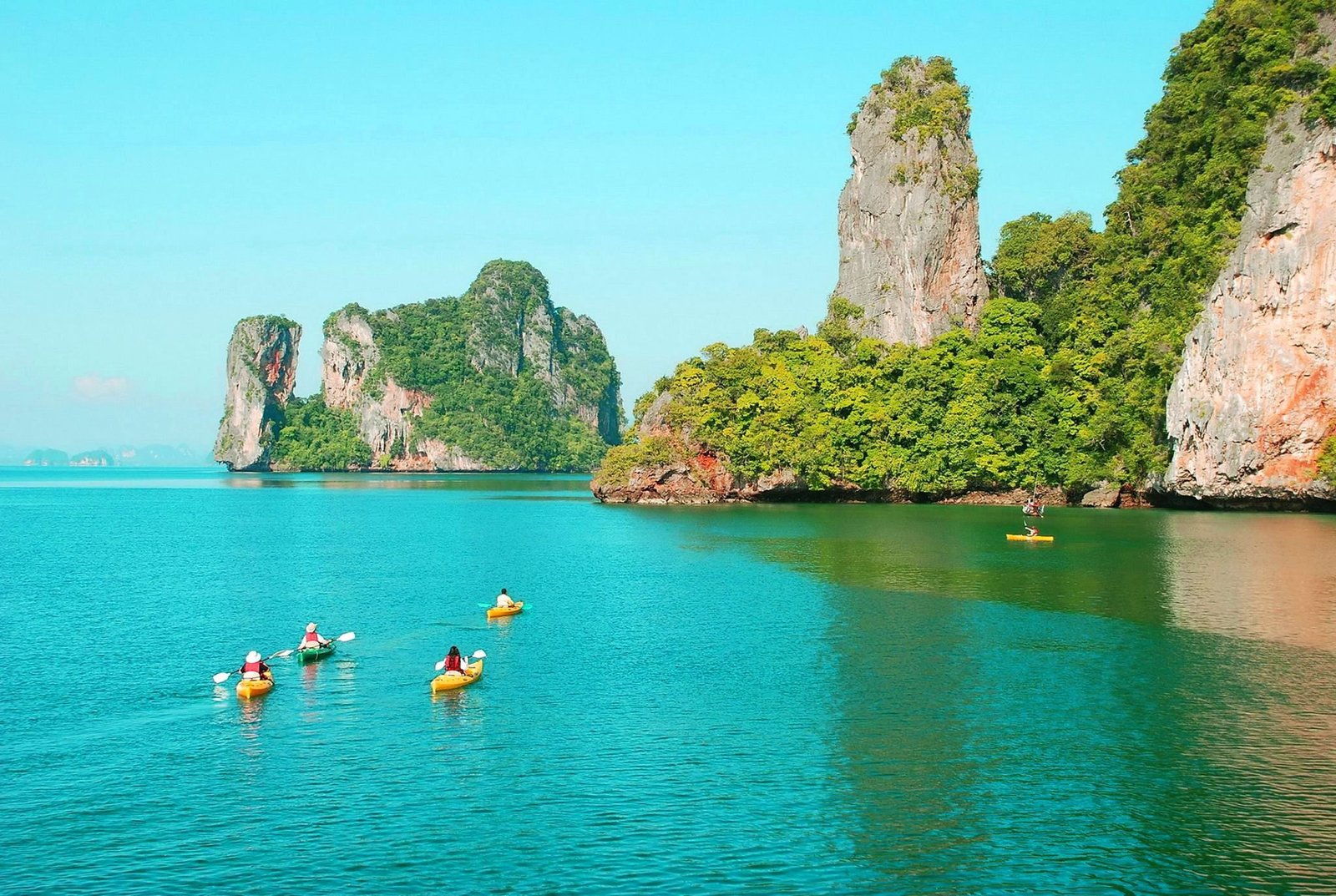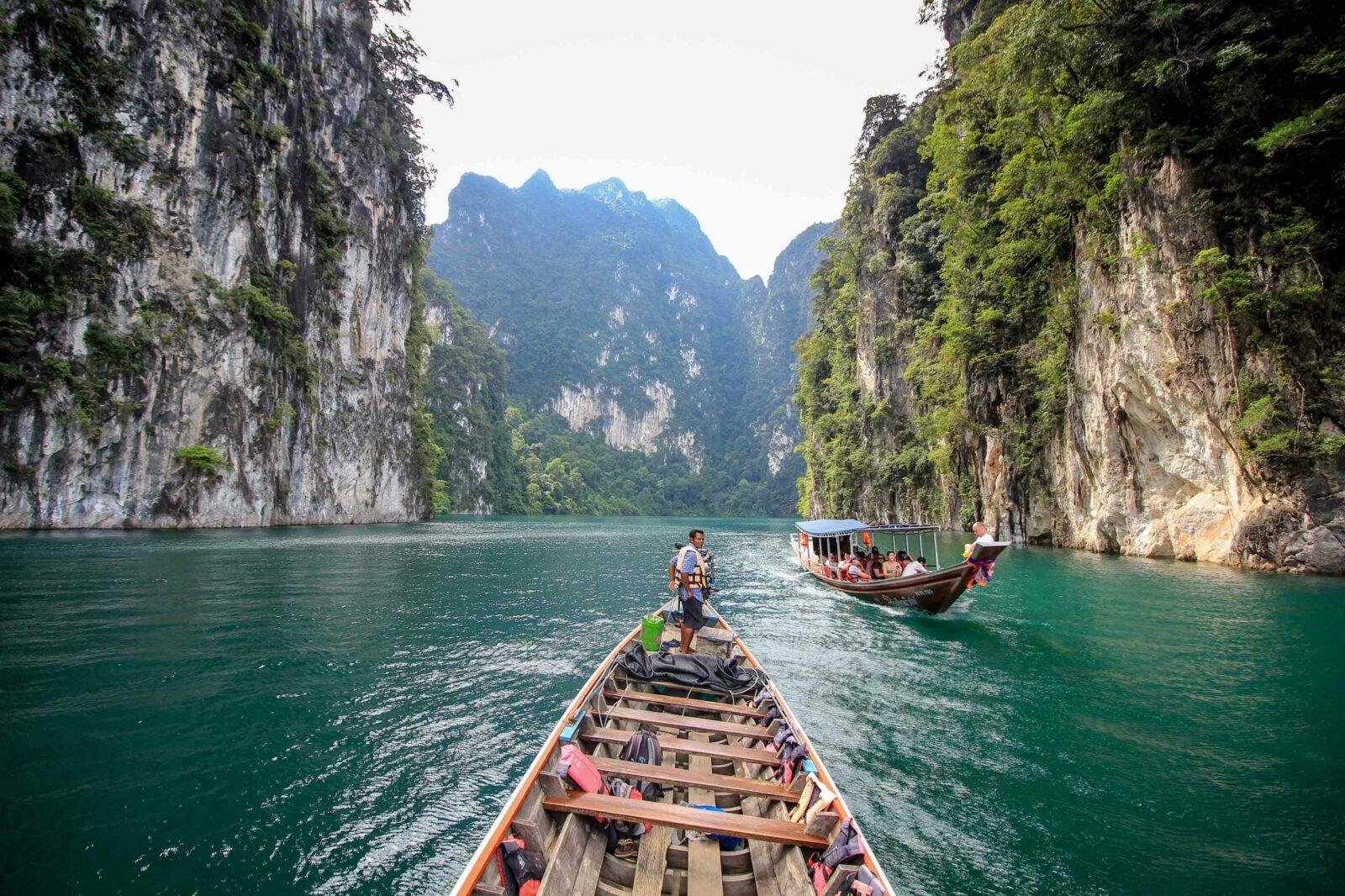Thailand, known for its vibrant cities and pristine beaches, is also home to some of the most beautiful national parks in the world. Thailand’s national parks are a haven for nature lovers, offering stunning landscapes, rich biodiversity, and thrilling outdoor adventures. Whether you’re looking for a peaceful retreat in nature or an adrenaline-pumping hike, these parks have something for everyone. In this guide, we’ll explore the best national parks in Thailand, dive into its diverse wildlife, discover the top hiking trails, and offer tips on when and how to visit these natural wonders.
Discover the best tours in Thailand at exclusive prices with thai adventure club
Top Thailand’s National Parks for Nature Enthusiasts
Thailand’s national parks cover a variety of terrains, from lush rainforests to rugged mountains and marine sanctuaries. Here are some of the top parks that should be on every nature lover’s itinerary:
- Khao Sok National Park: Situated in southern Thailand, Khao Sok is known for its ancient rainforest, limestone mountains, and the beautiful Cheow Lan Lake. It’s one of the oldest rainforests in the world, offering opportunities to spot wildlife such as gibbons, elephants, and exotic birds.
- Doi Inthanon National Park: Located in the northern part of the country, this park is home to Thailand’s highest peak, Doi Inthanon. The park is famous for its waterfalls, cloud forests, and cool climate, making it a favorite among trekkers and nature photographers.
- Erawan National Park: Famous for its stunning seven-tiered waterfall, Erawan National Park is located in Kanchanaburi province. Visitors can swim in the emerald-green pools, hike through lush forests, and spot wildlife such as monkeys and monitor lizards.
- Khao Yai National Park: As Thailand’s first national park and a UNESCO World Heritage Site, Khao Yai is a must-visit. The park spans across four provinces and is home to diverse wildlife, including elephants, tigers, and hornbills. With numerous waterfalls, hiking trails, and viewpoints, Khao Yai is perfect for both casual visitors and seasoned adventurers.
- Mu Ko Similan National Park: This marine national park is a paradise for divers and snorkelers. Located in the Andaman Sea, the Similan Islands are known for their crystal-clear waters, vibrant coral reefs, and abundant marine life, including sea turtles and whale sharks.
Exploring Thailand’s Diverse Wildlife: What to Expect
One of the main reasons nature lovers flock to Thailand’s national parks is the rich and diverse wildlife. These parks provide sanctuary to numerous species of mammals, birds, reptiles, and amphibians, many of which are endangered.
For instance, in Khao Yai National Park, you might spot elephants wandering through the forest or hear the distinct call of gibbons. This park is also home to the rare Great Hornbill, a bird species with a striking appearance and a significant wingspan. Keep your eyes peeled for the elusive Malayan sun bear and the clouded leopard, although these species are rarely seen.
Khao Sok National Park offers another wildlife experience altogether, focusing on tropical species. Gibbons, langurs, and macaques are common sightings in the dense forest, and lucky visitors may even glimpse wild elephants. Birdwatchers will be thrilled to know that Thailand’s national parks, especially those in the north, are home to over 300 bird species, including colorful kingfishers and majestic eagles.
For marine life enthusiasts, the coral reefs and clear waters of Mu Ko Similan National Park offer the chance to see a variety of sea creatures. Sea turtles, manta rays, and the occasional whale shark are common in these waters, making it a top destination for divers.
Find out now: Top 10 destinations in Thailand
Best Hiking Trails in Thailand’s National Parks
Thailand’s national parks offer countless hiking opportunities, whether you’re a beginner looking for a casual stroll or an experienced hiker seeking a more challenging adventure. Here are some of the best trails:
- Kew Mae Pan Trail, Doi Inthanon National Park: This short but breathtaking trail takes you through cloud forests and grasslands at a high altitude. The panoramic views from the summit, especially during sunrise, are spectacular.
- Erawan Waterfall Trail, Erawan National Park: This easy-to-moderate hike takes you up the tiers of the Erawan Waterfall. At each level, you can stop to swim in the cool, refreshing pools. The scenic and shaded trail makes it a perfect escape from the heat.
- Pha Kluai Mai Trail, Khao Yai National Park: This moderate 3.5-kilometer trail winds through the park’s dense jungle, offering chances to spot wildlife and birdlife. The trail also leads to Pha Kluai Mai Waterfall, which is especially beautiful during the rainy season.
- Ton Kloi Waterfall Trail, Khao Sok National Park: This challenging hike takes you through the park’s tropical rainforest to the stunning Ton Kloi Waterfall. The trek can take up to six hours, but it’s worth it for the chance to immerse yourself in one of Thailand’s most untouched landscapes.
- Similan Island Trails, Mu Ko Similan National Park: For those who prefer coastal hikes, the Similan Islands offer several trails through dense forests and pristine beaches. These trails provide stunning views of the ocean and the surrounding islands.
When to Visit Thailand’s National Parks: Ideal Seasons for Nature Lovers
Timing your visit to Thailand’s national parks is essential for making the most of your experience. The best time to visit varies depending on the region and the type of activities you’re interested in.
- Northern Thailand (Doi Inthanon, Chiang Mai region): The cool season, from November to February, is the best time to visit northern parks like Doi Inthanon. The weather is mild, and the clear skies make it ideal for hiking and wildlife spotting.
- Southern Thailand (Khao Sok, Similan Islands): Southern parks are best visited during the dry season, from December to April. This is especially true for marine parks like Mu Ko Similan, where the diving and snorkeling conditions are at their peak.
- Central Thailand (Khao Yai, Erawan): The dry season, from November to February, is the best time to explore parks in central Thailand. The weather is cooler, and the waterfalls, while not at their fullest, are still impressive.
Exploring Thailand hidden gems in 2024
Eco-Tourism and Conservation Efforts in Thailand’s National Parks
Thailand’s national parks are not just recreational spaces but also critical conservation areas. Over the years, Thailand has made significant strides in preserving its natural resources and biodiversity through eco-tourism initiatives.
For example, Khao Sok National Park is home to community-based tourism projects that promote sustainable practices and allow visitors to learn about the park’s ecosystems and local culture. In Khao Yai National Park, conservation efforts have focused on protecting endangered species like the Asian elephant and the tiger.
Visiting these parks with a focus on eco-friendly practices—such as minimizing waste, avoiding plastic, and respecting wildlife habitats—helps preserve these natural areas for future generations.
6. Camping and Outdoor Adventures in Thailand’s Wilderness
For those who want to fully immerse themselves in nature, camping in Thailand’s national parks is an incredible experience. Many parks offer designated camping areas with basic facilities such as restrooms and showers.
Khao Sok National Park is particularly popular for its floating bungalows on Cheow Lan Lake, where visitors can spend the night surrounded by water and dense jungle. Doi Inthanon National Park also has campsites near the summit, where you can wake up to cool mountain air and stunning views.
If camping isn’t your thing, you can still enjoy other outdoor adventures like kayaking, wildlife safaris, and rock climbing, depending on the park you visit.
Essential Tips for Visiting Thailand’s National Parks: What to Know Before You Go
- Pack Essentials: Make sure to bring insect repellent, sunscreen, and plenty of water. If you’re hiking, wear appropriate footwear and consider hiring a local guide for more challenging trails.
- Respect Wildlife: While it’s exciting to see animals in their natural habitat, it’s important not to disturb them. Keep your distance, avoid feeding animals, and don’t leave litter behind.
- Plan for the Weather: Thailand’s weather can be unpredictable, so be prepared for sudden rain showers, especially during the rainy season. It’s a good idea to carry a waterproof jacket or poncho.
- Entrance Fees: Most of Thailand’s national parks charge a small entrance fee, which goes towards conservation efforts. Be sure to carry cash, as many parks do not accept credit cards.
- Stay Eco-Conscious: Follow the “leave no trace” principles when visiting. This includes packing out all trash, avoiding single-use plastics, and sticking to designated trails.
Thailand’s national parks are a treasure trove for nature lovers. Whether you’re exploring lush rainforests, trekking to towering waterfalls, or diving into vibrant coral reefs, there’s no shortage of breathtaking experiences to be had. With careful planning and a commitment to eco-friendly practices, your visit to these parks will be both memorable and sustainable.
Follow us on:
- Facebook: Thai Adventure Club
- Instagram: thaiadventureclub



Comment (0)